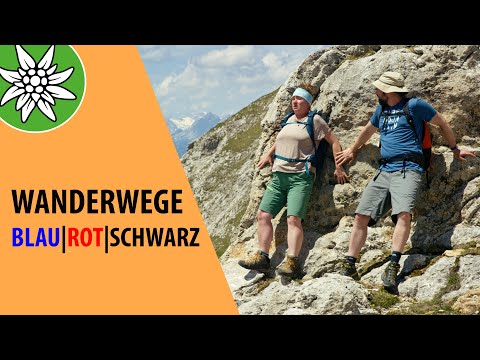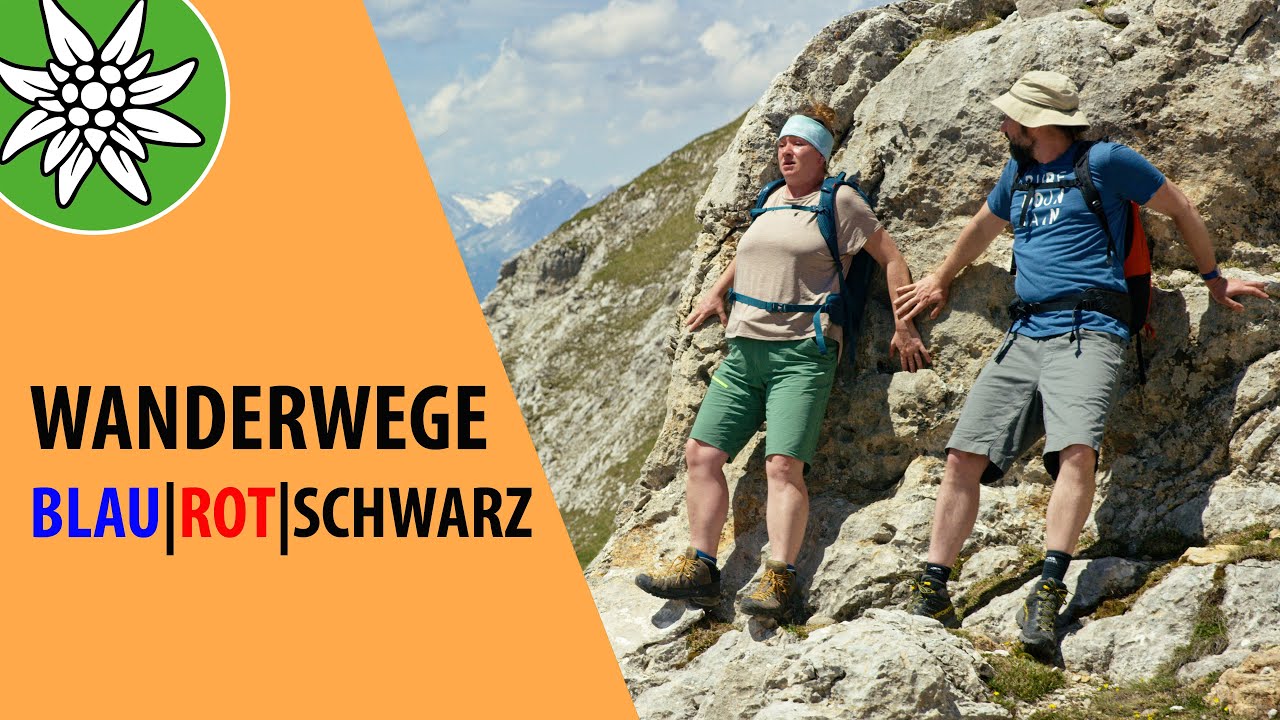Overview
Most mapping clients can show the total elevation gain and distance, and some outdoors focused ones will even show details about the grade. These values can also be inferred by looking at the topo map itself, or the incline key if present. To me “difficulty” doesn’t need to include the basic metrics of a hike, but rather the terrain present and the way it is moved over. The former can have many aspects to it, the latter can be broken down into 3-4 major categories that are useful to describe how a hiking path is interacted with.
I feel this is distinct from smoothness as it tries to map meaningful changes for pedestrians in a way that is fairly objective / verifiable. Using a key with 8 values meant for wheeled vehicles isn’t necessarily helpful - those 8 values essentially cover minor variations of only the first two values here, and cover obstacles up to 24cm or up to 9.4" high. Many more challenging hiking trails would just get graded as impassable under that key.
Note that this key will only map to parts of existing systems, and other systems may fall within multiple values here, they aren’t all a pure one to one mapping. There is still value in including existing systems as it helps validate the thought process as well as giving someone familiar with system C but not A a good starting point. By focusing solely on technique / mode of travel, we clarify a lot of ambiguity. A trail doesn’t need to have a “steady ascent’ ala SAC T2 just the “some sure-footedness” aspect (ironically the sole example for SAC T2 on the OSM wiki does not show a path with a steady ascent). We likewise clear up ambiguity if there is a trail with a T1 technique and T3 exposure etc, as a simple smooth single track dirt trail here will not be tagged as use_of_hands because it happens to be near a cliffside and feels exposed.
I’m not sold on the particular wording of either the key or values, ![]() I’ve played with
I’ve played with path_locomotion, path_technique, path_traversal, hiking_technique, hiking_mobility etc. mode_of_traversal is probably makes the most sense but is a mouthful… I’ve moved from even_ground to even to simple_walking, uneven_ground to etc. complex_walking doesn’t feel quite right, but “challenging” or “demanding” feel more subjective.
Key Values
Value 1: casual walking
hiking_technique=casual_walking
Falls under: Class 1 YDS, NFS Class 2-5, SAC T1 / Yellow, Austria Blue, CAI T, AWTGS Grades 1-2, PWS W1 & W2
Obstacles: The ground may not be entirely smooth and have some irregularities, but it has few obstacles and none over knee height that cannot be avoided. It isn’t uncommon for these trails to use imported materials for their surfaces, but can also be on compacted or naturally even ground.
Slope: Flat to moderate.
Requirements:
- Be able to casually walk. Casual walking paths that wheelchair accessible should be tagged with
wheelchair=yes. - Almost all casual footwear will be adequate.
- Little to no focus needed for traction, people can walk and talk and not pay much attention to the path surface.
Useful related keys:
- wheelchair=* should be added for even paths that are wheelchair accessible
- highway=steps should be used if there are constructed steps on a path
- smoothness=* is currently only for vehicular ways, but IMO should be applicable here. Wheelchair accessible paths should definitely include this.
- surface=* can help predict footing - a path which is paved or is made of gravel will tend to be more even than one out of dirt.
Value 2: surefooted walking
hiking_technique=surefooted_walking
Falls under: Class 1 YDS, NFS Class 1-3, SAC T2 / White-Red-White, Austria Red, CAI E, AWTGS Grade 3?, PWS T1-T2
Obstacles: The path has around ankle to knee high obstacles (roots, rocks, etc) that need to be stepped on / passed through to proceed forward.
Slope: Flat to moderate.
Requirements:
- Able to walk with balance, coordination, and sure-footedness.
- Footwear more consequential but trail runners etc should be fine, flip flops and high heels could get awkward.
- Attention will need to paid to footing in places to avoid loss of traction / tripping.
Useful related keys:
- highway=steps should be used if there are constructed steps on a path
- surface=* can help predict footing, a compacted trail with some roots or rocks is different than a sandy “sloggy” trail etc. this can also be misleading, as obstacles in the path surface are not included here
- smoothness=* is currently only for vehicular ways, but IMO should be applicable here
Value 3: use of hands required
hiking_technique=use_of_hands
Falls under: Class 2 YDS, NFS Class 1-2, SAC T3 / White-Red-White, UAII 1, Austria Black, SWW White-red-white, CAI EE, AWTGS 3-4?, PWS T3-T4?, BMC Grade 1
Obstacles: The path consists of obstacles roughly knee to shoulder high that need to crossed. While both feet may be off the ground for a mantle, this is generally just for a few seconds and doesn’t quite fall into “scrambling”. Terrain could include boulders or talus that are crossed, mantling up onto a higher surface level (or dropping onto a lower one), fallen trees that would not be cleared as part of regular maintenance, etc.
Slope: Even flat terrain can have obstacles on it that require use of hands to surmount. Additionally once terrain gets close to or over 30° hands (or trekking poles) are generally used for support and balance occasionally as the slope itself essentially becomes an obstacle. Many highly developed trails are explicitly designed to avoid such steep angles, but there are exceptions.
Requirements:
- Enough upper body strength to pull up your body, along with being able to move with balance, coordination, and sure-footedness.
- Supportive or grippy footwear is recommended (boots, approach shoes, etc).
- The ability to think a few steps ahead and a little bit of confidence when focusing on the path are very helpful.

Useful related keys:
- surface=* honestly this is of less use here, as most large obstacles will be rocks or rock of some kind but parts or most of the path surface may be something else entirely.
- incline=* shows the steepness of the path in degrees or grade %
- highway=via_ferrata if there is permanent equipment installed to ease risk or traversal along a path. It can be rated with via_ferrata_scale
- assisted_trail for the same if it is just for a small section of trail
Value 4: Scrambling
hiking_technique=scrambling
Falls under: Class 3-4 YDS, Bouldering VB, NFS Class 1, SAC T4-6, UAII 2, Austria “Alpine Route”, CAI EE, AWTGS 4-6?, PWS T3-R?, BMC Grade 2-3
Obstacles: High angle obstacles that need to be “climbed” for significant lengths of time finding handholds and footholds and pulling oneself up, but are simpler than technical climbing which use of a rope and harness are expected (see grading systems above). Feet are off the ground for more than a few moves, or there are repeated sections of short climbing. This is going to be a slim minority of paths in many regions.
Slope: Generally moderate to high angle.
Requirements:
- Good grippy footwear, being physically fit,
- Approach shoes, “high route shoes”, cross trainers, or boots are recommended.
- While not considered “technical climbing” significant risk is often involved. Previous climbing or mountaineering experience is highly recommended,
Useful related keys:
- surface=* most likely rock
- incline=* shows the steepness of the path in degrees or grade %
- highway=via_ferrata if there is permanent equipment installed to ease risk or traversal along a path. It can be rated with via_ferrata_scale
- assisted_trail for the same if it is just for a small section of trail
Links to different rating systems
YDS & Bouldering
NFS Trail Classifications (loose and not 100% predictive for higher grades)
SAC & friends
Austria
BMC
UIAA
CAI
https://wiki.openstreetmap.org/wiki/Proposal:Cai_scale
https://www.cai.it/wp-content/uploads/2021/12/allegato-circolare-22_2021-Classificazione-difficoltà.pdf (pdf in Italian)
https://www.bielointothewild.com/hiking-in-italy-understanding-the-difficulty-of-a-hiking-trail/ (good unofficial write up)
AWTGS
Tasmanian PWS
Further thoughts
I was originally not going to have two levels below “use of hands” to help keep things less ambiguous (more like the YDS breakdown than CAI/SAC), but I think there’s value in breaking walking into two levels:
Some AllTrails comments for what I’d consider NFS 3 / easy SAC T2 / YDS 1 terrain on a ~2.5 mile loop with less than 300 feet of low grade elevation gain change:
https://www.alltrails.com/trail/us/washington/little-cranberry-lake-inner-loop “This trail is NOT easy. There are many tree roots and sharp rocks on the trail with barely any sections that are even and easy. Wear good boots and if you’re a beginner (like me)… do NOT go alone. The scenery IS beautiful…”
https://www.alltrails.com/trail/us/washington/little-cranberry-lake-and-trail-100-loop “Not an easy hike, probably moderate. Trails nearest lake are rocky. Trail through forest easier. Beautiful hike.” and “Rated as an easy hike. I would say it’s near moderate due to roots and rocky terrain. Experienced hikers will breeze through it, but novice hikers beware of your footing. You may take an involuntary bath in Cranberry Lake.”
I’m unsure of slope here - I didn’t have it at first, thought perhaps the first tier should be capped at ~20° for the sake of it being either even_ground or simple_walking aimed at tourists, which then means the second one would probably be capped somewhere around 30° (which I’m less happy about), but that’s beginning to feel a bit annoying.
Some related thoughts about separation of concerns here.
One complaint could be the wording of simple_walking and complex_walking for multi-use trails. Going back to even_ground and uneven_ground would solve that, but mix the mental model a bit. My understanding is that once we get to use use_of_hands is that MTB users are in trials technique level terrain, but the two systems can co-exist.
If someone from a country that uses a system I’m referencing feels I am misrepresenting it, please let me know! This is a best faith effort by someone that has never used them. ![]()
There is an existing key for assisted trails, so via ferrata can be ignored I think, and glacier travel is niche and it’s own beast.
Scrambling could include YDS 4, BMC 3, or cut-off below that as indicated here. These are “ropes recommended” ratings, though experienced individuals do without them and they tend to overlap with actual climbing routes (YDS 4 overlaps to around YDS 5.5) and BMC-3 is described by the agency as “Grade 3 scrambles often appear in climbing guides as ‘Moderately’ graded climbing routes […] Use of the rope is to be expected for several sections, which may be up to about Difficult in rock climbing standards.”


